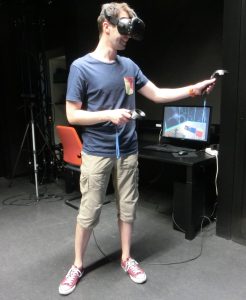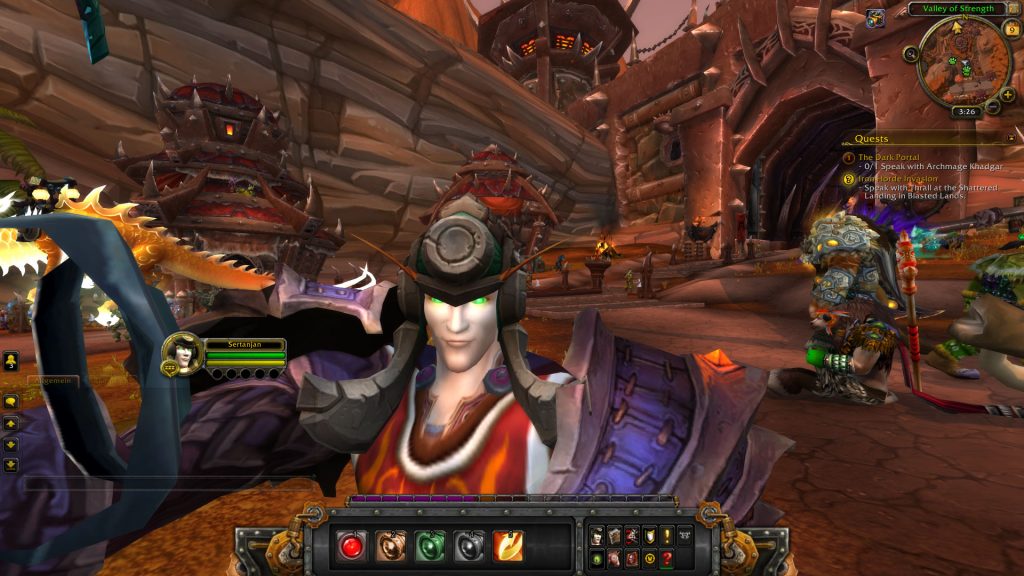Another Look at VR
During my ongoing literature review I often discover interesting facts about things I’ve never thought about. Sometimes I can connect these facts with my own observations: The result is mostly a completely new idea why things are as they are. Maybe these ideas are new to you, too. Therefore I’ll share my new science based knowledge with you!
This week: This time, I think about my most recent experiences with VR technology and the technology’s current state of development.
Since I experienced VR for the very first time using the Samsung Gear VR, I tried out various VR devices and applications. So far, I enjoyed the HTC Vive the most as this VR system allows a user to move around within the boundaries of a tracking area thus providing the illusion of actually exploring the virtual worlds. However, if travelling over a greater distance is required, a different method of locomotion has to be implemented. My personal favorite method is the ability to teleport as this greatly facilitates one’s range without significantly increasing the chances of experiencing simulator sickness.
Unfortunately, although I spent quite some time in VR over the last few months, I have not had the chance to try out many VR computer games. Instead, I mostly used VR for scientific research projects and educational purposes. Nevertheless, even those serious VR applications allowed me to develop an in-depth understanding of the current possibilities as well as limitations.
Personally, despite some limitations concerning the sharpness of the images, the size as well as weight, I am already quite impressed by the quality of the HTC Vive Head Mounted Display (HDM). However, improving the sharpness and quality of the displays and reducing the dimensions of the HMD is only a very small step closer to a photorealistic VR simulation as the main bottleneck is created by the computer rendering the simulations as this has a very high performance demand in contrast to traditional flat screen applications. Luckily, as computer technology rapidly increases in performance, those issues are probably solved, soon.

Using the HTC Vive
My main issue is, however, that all VR devices are not providing me with the degree of freedom I normally have when I play regular computer games. This is due to the fact that the VR systems mainly use controllers that are relatively bulky and only feature a limited amount of buttons. As a result, although the controllers provide a trigger button that can be pulled with the index finger and used to interact with the virtual environment, I feel constrained as I am constantly required to carry around the controllers.
Also, it just does not feel right to interact with an environment by pressing specific buttons on a bulky controller. Of course, when playing a normal computer game, I usually use the keyboard which is even less natural but it supports all of my fingers and, more importantly, I can easily take my hands off the keyboard without loosing control as I can easily put them back into the correct position which is not that easy when the controller is put to the side.
Naturally, there are also some exceptions such as racing games that are played using a racing wheel mirroring a real world steering wheel, but as soon as the input game mechanics go beyond a simple feature activation, I start to feel limited or handicapped again. This especially becomes problematic when it comes to typing in the VR environment as this then has to be done by sequentially selecting the individual characters which is quite demanding in comparison to simply typing on a keyboard.
Moreover, aside from the HTC Vive, no other VR device tracks a user’s position inside of a room. That way, only the HTC Vive partly supports a natural interaction with the environment by walking around. Other devices only allow for a movement inside of the virtual worlds by keeping one of the controller buttons pressed which works well for „flat“ computer games but completely breaks the illusion in a visually immersive VR environment.
In the end, due to the visual immersion and higher presence, i.e., the feeling of being inside of the virtual world, I really enjoy exploring VR environments. Also, due to these positive effects, using VR for the purpose of knowledge training can result in an improved training outcome or at least higher learning quality. However, despite this great potential, a lot of work still is left to be done as the illusion is negatively affected by the limitations of the current technology. Nevertheless, I am still hopeful that the current boom of VR technology will result in a new era of interactive systems.



